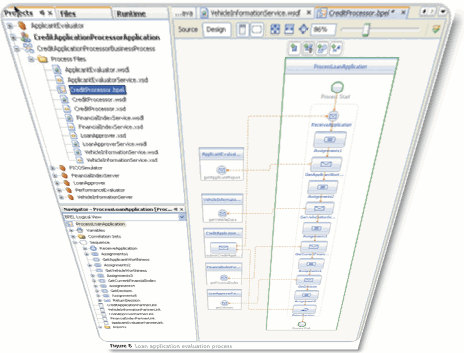Technical Publications-Articles-Deliver Composite Applications with Java, WS-BPEL, and SOA
30 May 2007Publications, WS-BPEL, SOA-Blueprints, The-Web-of-Services
Read the article:
My co-workers Prabhu Balashanmugam, Kevin Schmidt, and yours truly had an article published in the March 2007 issue of Java Developers’ Journal entitled Deliver Composite Applications with Java, WS-BPEL & SOA – Supporting the complete lifecycle. Tuesday morning I walked into the office after the Memorial Day weekend, and I find this issue dropped on my chair by Kevin. Too bad Prabhu and me found our photos swapped.

The article discusses and demonstrates the many capabilities available in the Java EE 5 SDK Tools Bundle for delivering composite applications using Java, WS-BPEL, and SOA technologies. It discusses the benefits of these two technologies and how they can work together to enable the development of next-generation applications.
This article also demonstrates how NetBeans provides a truly integrated development environment that allows users to extend existing Java services, create new Java services, and compose Java services with a business process. Also described is how NetBeans can be used to iteratively develop, build, deploy, and test composite applications seamlessly, thereby reducing the overall turnaround time and effort required to deliver composite applications.

Scenario
The scenario is a new external-facing application that is being developed iteratively by reusing functions from existing Java EE applications and external Web services.
There are three existing Java EE Applications:
- the Performance Evaluator – provides evaluations on the fiscal performance of existing customers;
- the Vehicle Information Server – evaluates market conditions and vehicle history and serves a detailed report on the worthiness of the vehicle; and
- the Financial Index Server – provides the current running rates and values that should be used to compute the loan details. The new application should provide a service to receive loan applications over the Web and respond with a decision.
The loan decision should be arrived at by applying predefined processing rules on the following data:
- applicant’s financial worthiness,
- vehicle’s value,
- loan amount, and
- current policies and indices for loans.